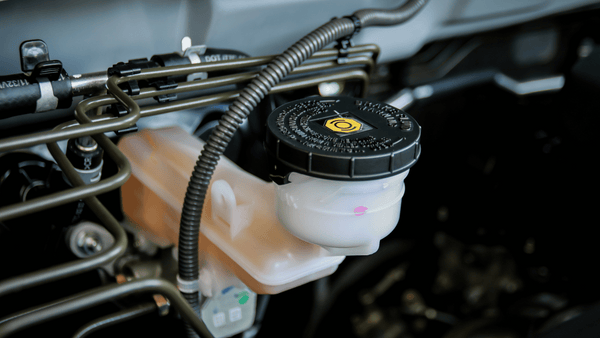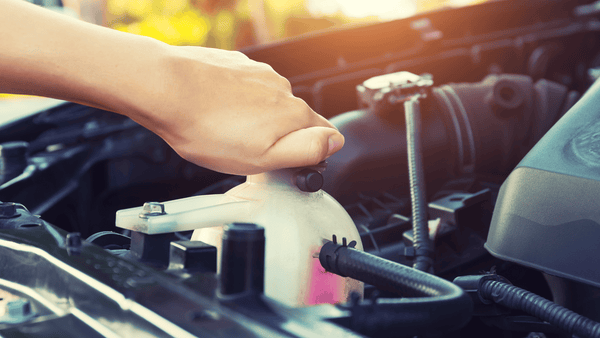Keeping your engine running at optimal temperature is crucial for reliable performance and longevity. The coolant reservoir tank plays an important role in maintaining proper engine cooling. An adequate coolant reservoir ensures that enough coolant circulates through the engine to absorb excess heat generated during combustion. Additionally, the reservoir acts as an expansion chamber to accommodate increased coolant volume as it heats up. Adequately sizing the coolant reservoir tank and regularly maintaining it can help maximize engine performance. Replacing a worn-out or undersized reservoir with a high-quality universal reservoir tank can significantly boost your vehicle's reliability and efficiency.
Understanding the Coolant Reservoir Tank
The coolant reservoir tank allows air to escape the cooling system while also providing a place for extra coolant to gather. As the engine warms up and the coolant expands, the excess coolant collects in the reservoir tank. When the engine cools and the coolant volume decreases, the reservoir replenishes the system with extra coolant. This cycle helps maintain consistent coolant levels inside the engine. The reservoir also traps air bubbles that form in the cooling system. As bubbles rise to the top of the reservoir, they escape out through an overflow tube, ensuring coolant can freely circulate through the engine. A healthy reservoir tank is critical for effective engine cooling. Over time, rubber reservoirs may develop cracks or leaks, while plastic ones can become brittle and degraded.

Benefits of a Reliable Coolant Reservoir Tank
There are several benefits of maintaining a reliable coolant reservoir tank:
- Improved heat transfer - A properly filled reservoir ensures the cooling system is full of coolant. This allows for maximum heat transfer from the engine to the coolant, keeping temperatures within the optimal range.
- Increased engine efficiency - When the engine runs at the correct temperature, fuel economy and performance improve. An adequate reservoir helps maintain proper coolant levels for peak efficiency.
- Longer engine life - Overheating is a leading cause of engine failure. A reliable reservoir tank helps prevent overheating that can damage internal components.
- Reduced maintenance costs - Regular coolant top-offs and premature hose replacements can be avoided with a reservoir that does not leak or degrade.
- Better component protection - Consistent engine temperatures safeguard rubber and plastic parts inside the cooling system against heat-related deterioration.
Aging coolant reservoir tanks become less effective at these important functions. Replacing the reservoir with a high-quality universal tank is a straightforward and inexpensive way to regain optimal cooling performance.
Signs of a Failing Coolant Reservoir Tank
There are a few warning signs that indicate your coolant reservoir tank is failing and in need of replacement:
- Frequent coolant loss - If the reservoir begins leaking coolant, you'll need to top off levels more often. Over time, leaks can deplete the system entirely.
- Brittle or cracked reservoir - Physical deterioration of the plastic or rubber material, creating splits or holes that allow coolant to escape.
- Difficulty filling the reservoir - The reservoir may no longer properly seal or expand as designed, making it hard to add coolant and trap air bubbles.
- Abnormal engine temperatures - Unusually high or low temperatures could be a sign the reservoir is no longer buffering coolant volume changes properly.
- Visible coolant inside the overflow tube - A healthy reservoir should not allow coolant to rise into the overflow tube except during expansion. Persistent coolant here may indicate a capacity issue.
- Stained or rusty exterior - Discoloration or corrosion of the outer reservoir surface is a warning sign that the material is degrading.
If you notice any of these issues, having a mechanic inspect your coolant reservoir tank is recommended. Replacement may be needed to restore proper cooling system function and optimize engine performance. A universal fit replacement tank is an affordable solution for most vehicles.
Choosing the Right Coolant Reservoir Tank
When choosing a replacement coolant reservoir tank for your vehicle, there are a few factors to consider:
- Material - Most replacement reservoirs are made of either plastic or rubber. Plastic tanks are more durable but can become brittle with age. Rubber reservoirs are flexible but prone to cracking. Consider your vehicle's age and existing material.
- Capacity - Check the capacity of your original reservoir and match it as closely as possible with a replacement. An undersized tank may not provide adequate volume for coolant expansion.
- Fit - Choose a universal fit reservoir that is compatible with your vehicle's hose fittings and mounting points. Measure your original tank for reference.
- Quality - Look for a replacement tank made by a reputable automotive brand. Check reviews from other owners for reliability information. Thicker materials and reinforced joints typically indicate higher quality.
- Price - Coolant reservoir tanks vary in cost, so consider your budget as well. Most universal replacement tanks cost between $20 and $100.
By evaluating these factors, you can determine the right coolant reservoir tank for your vehicle to maximize performance and efficiency. Matching capacity, material, and fit as closely as possible to the original equipment will provide the most seamless upgrade.

Installing and Maintaining the Coolant Reservoir Tank
Installing a replacement coolant reservoir tank is generally straightforward and can be done in just a few steps:
- Drain the existing coolant from the system into a storage container. This will make removing and replacing the reservoir easier.
- Remove any mounting hardware and hoses connecting the old reservoir to the cooling system. You may need to pry rubber hangers or clips loose.
- Install the new reservoir in the same location using the original mounts and bolts. Attach hoses securely to the appropriate fittings.
- Fill the cooling system with fresh coolant following the manufacturer's specifications. This often involves inserting a funnel into the radiator fill neck.
- Top off the coolant reservoir with the proper amount for your vehicle. Run the engine to circulate the coolant and bleed any air trapped in the lines.
- Periodically inspect coolant levels in the reservoir and cooling system. Top off as needed and follow the manufacturer's maintenance schedule for coolant and reservoir replacement. This typically occurs every 5 years or 100,000 miles.
By properly installing and maintaining your new coolant reservoir tank, you can ensure optimal performance for years to come. Replacing an older, failing reservoir is an inexpensive upgrade that can significantly improve your vehicle's engine efficiency and reliability.

Conclusion
In conclusion, a reliable coolant reservoir tank is essential for maximizing engine performance and efficiency. By properly sizing the reservoir, maintaining adequate coolant levels, and replacing older tanks showing signs of deterioration, you can help your engine run at its optimal temperature. A universal fit replacement reservoir is an affordable solution for most vehicles, allowing you to regain the benefits of a healthy cooling system. By matching capacity, material, and fit characteristics as closely as possible, you can achieve a seamless upgrade that revives your vehicle's cooling performance. With the proper installation and ongoing maintenance, your new coolant reservoir tank will help extend the life of your engine and protect costly components for years to come. Replacing a failing reservoir is a worthwhile investment in your vehicle's overall reliability.
Read More
- The Significance of Car Carburetor for Improved Performance – Labworkauto
- Upgrade Your Car Safety: Install Top-Notch Transmission Holder Now – Labworkauto
- Top 8 Winter Driving Tips:Headlights and More – Labworkauto
- The Science Behind Car Front Splitters: A Comprehensive Guide – Labworkauto
- Egr Cooler Kit: How Does an Egr Cooler Work? – Labworkauto


